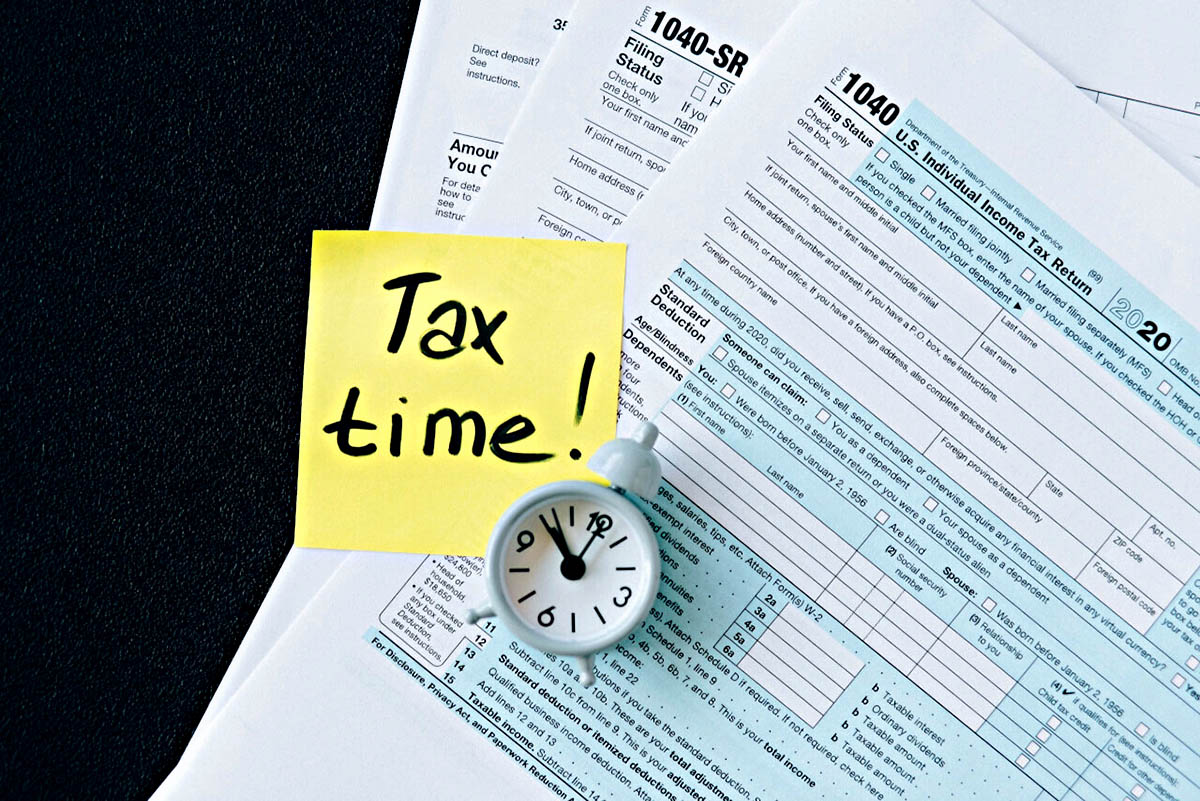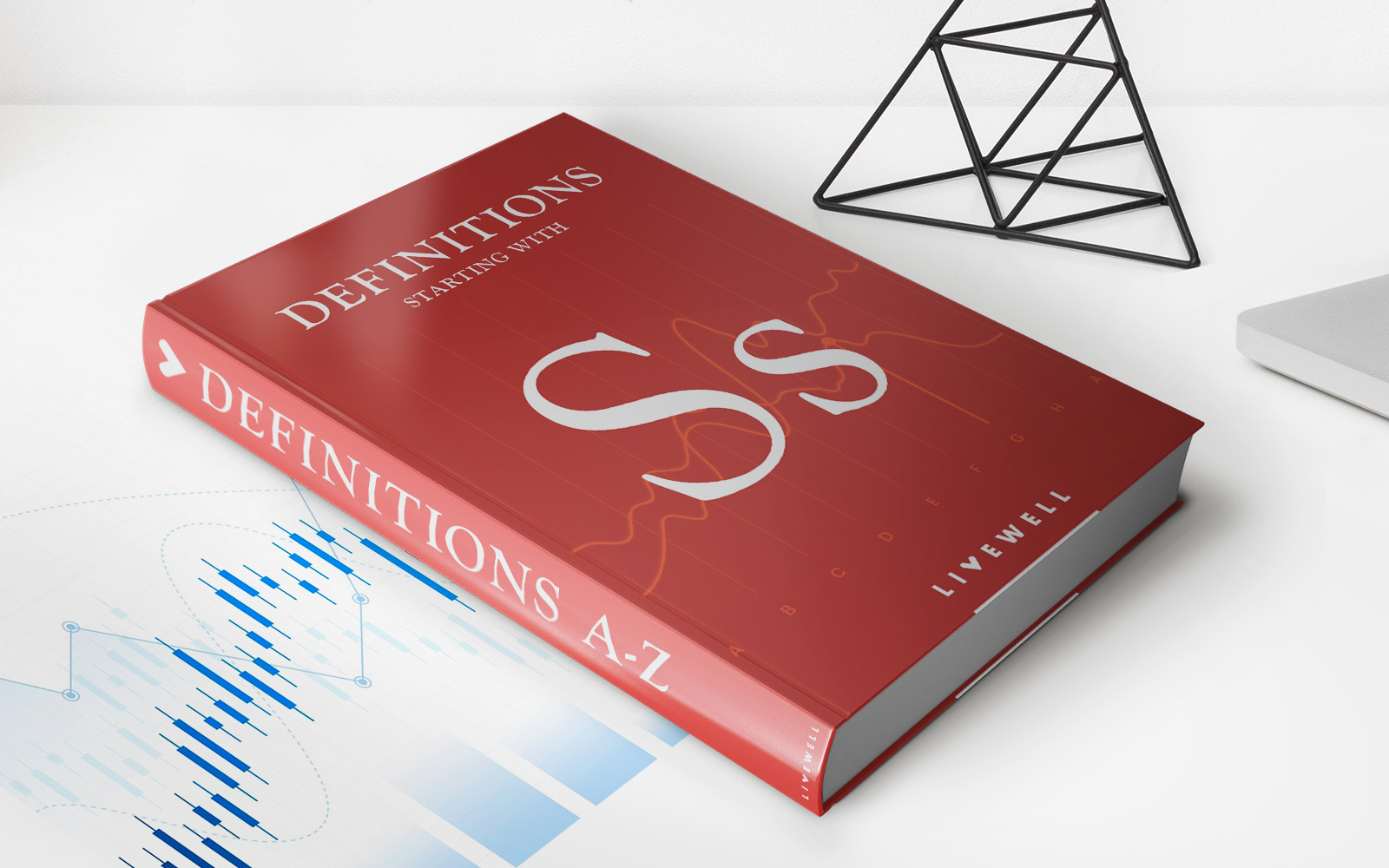

Finance
Most Small Business Are In What Tax Bracket?
Published: January 20, 2024
"Discover which tax bracket most small businesses fall into. Get insights and tips on managing finances for your business."
(Many of the links in this article redirect to a specific reviewed product. Your purchase of these products through affiliate links helps to generate commission for LiveWell, at no extra cost. Learn more)
Table of Contents
Introduction
When it comes to small businesses, navigating the complex world of taxes is a crucial aspect of financial management. Understanding tax brackets can play a significant role in how small businesses plan and manage their finances. By knowing which tax bracket they fall into, small business owners can make informed decisions that have a direct impact on their bottom line.
Tax brackets determine the percentage of income that businesses and individuals are required to pay in taxes. These brackets are divided into different categories based on income levels, with each category having its own tax rate. Small businesses, just like individuals, can fall into different tax brackets depending on their annual revenue and taxable income.
In this article, we will explore the ins and outs of tax brackets for small businesses. We will delve into the different tax bracket categories, discuss the characteristics of small businesses in these brackets, and highlight the factors that affect which tax bracket a small business falls into. Additionally, we will examine common tax strategies that small businesses employ based on their tax bracket.
Whether you are a small business owner or someone interested in understanding how taxes affect small businesses, this article will provide valuable insights into the world of tax brackets.
Understanding Tax Brackets for Small Businesses
Tax brackets are a way of categorizing income levels and determining the corresponding tax rates. They are used to calculate the amount of tax owed by individuals and businesses to the government. Small businesses, just like individuals, are subject to tax brackets based on their annual revenue and taxable income.
The tax brackets for small businesses operate on a graduated scale, meaning that different portions of income are taxed at different rates. As the business’s income increases, it moves into higher tax brackets, resulting in a higher overall tax liability. Understanding how tax brackets work is essential for small business owners to effectively plan and manage their finances.
Each tax bracket has a specific income range and a corresponding tax rate. For example, the lowest tax bracket may have a tax rate of 10%, while the highest tax bracket could have a tax rate of 37%. As a small business owner, it is crucial to know which tax bracket your business falls into, as this will determine the percentage of income that you are required to pay in taxes.
It is important to note that tax brackets are not a flat percentage applied to the entire income. Instead, they are structured as marginal tax rates. This means that only the income within each tax bracket is subjected to that specific tax rate. For instance, if your small business falls into the 25% tax bracket, it does not mean that all your income is taxed at 25%. It means that only the portion of your income within that bracket will be taxed at a rate of 25%. The remaining income will be taxed at the rates of the lower brackets.
Understanding the tax brackets for small businesses is vital in managing your finances and strategically planning your tax obligations. By knowing which tax bracket your business falls into, you can make informed decisions on deductions, expenses, and income distribution to optimize your tax liability while staying compliant with the tax laws.
Tax Bracket Categories for Small Businesses
Tax bracket categories for small businesses are determined by the annual revenue and taxable income of the business. These categories help in classifying businesses into different tax rate brackets, which affect the amount of tax that they need to pay. Let’s explore the common tax bracket categories for small businesses:
- Low-income bracket: Small businesses in this category have lower annual revenues and taxable incomes. Typically, they fall into the lowest tax brackets, which have lower tax rates. These businesses may have limited resources and operate on smaller profit margins, which is reflected in their tax bracket.
- Middle-income bracket: Small businesses in this bracket have moderate annual revenues and taxable incomes. They fall into the middle range of tax brackets, with tax rates that are higher than those in the low-income bracket. These businesses may have more stable cash flow and a slightly higher profit margin, resulting in a higher tax liability.
- High-income bracket: Small businesses in this category have higher annual revenues and taxable incomes. They fall into the highest tax brackets, which have the highest tax rates. These businesses are typically more established, with a larger customer base and higher profit margins. They may also have more significant expenses and deductions, allowing them to reduce their overall tax liability.
It is important to note that the specific income thresholds and tax rates for each tax bracket can vary from country to country and can change over time due to tax reforms and policy changes. Small businesses should stay updated on the latest tax laws and consult with tax professionals for accurate information concerning their specific jurisdiction.
Knowing which tax bracket your small business falls into is crucial for financial planning, budgeting, and optimizing your tax liability. It allows you to estimate the tax amount that you need to set aside and make strategic decisions on deductions, expenses, and growth opportunities.
Understanding the tax bracket categories for small businesses provides a framework for tax planning and helps in managing your financial obligations effectively. By being aware of your tax bracket, you can take advantage of available deductions and credits while ensuring compliance with tax laws.
Characteristics of Small Businesses in Various Tax Brackets
Small businesses can exhibit different characteristics depending on the tax bracket they fall into. These characteristics can vary based on factors such as annual revenue, taxable income, industry, location, and business structure. Let’s explore the characteristics of small businesses in various tax brackets:
- Low-income bracket: Small businesses in the low-income tax bracket often have modest annual revenues and taxable incomes. They may be startups or businesses in their early stages, with limited resources and lower profit margins. These businesses might focus on reducing expenses, establishing a customer base, and building their brand presence. They may rely on cost-effective marketing strategies, such as social media and word-of-mouth, to reach their target audience.
- Middle-income bracket: Small businesses in the middle-income tax bracket typically have stable revenue streams and moderate profit margins. They may have been operating for a few years and have established a loyal customer base. These businesses often have room for moderate growth and expansion opportunities. They may invest in marketing campaigns, customer retention initiatives, and employee development to enhance productivity and customer satisfaction.
- High-income bracket: Small businesses in the high-income tax bracket are usually well-established and have higher annual revenues and taxable incomes. They may have a strong market presence, a large customer base, and higher profit margins. These businesses often have the resources to invest in innovation, marketing, and expansion. They may focus on strategic partnerships, advanced technology adoption, and talent acquisition to maintain their competitive edge in the market.
It’s important to note that while the tax bracket can provide insight into a small business’s financial situation, it is not the sole determinant of its success or growth potential. Other factors such as industry trends, market conditions, competition, and managerial decisions also play significant roles.
Regardless of the tax bracket, small businesses share common characteristics, such as the need for effective financial management, strong customer relationships, and adaptability to changing market dynamics. Building a solid foundation in areas such as budgeting, cash flow management, and marketing is essential for the sustained growth and success of any small business, regardless of its tax bracket.
Factors Affecting the Tax Bracket of Small Businesses
Several factors can influence the tax bracket into which a small business falls. Understanding these factors is essential for small business owners to effectively manage their finances and optimize their tax liability. Let’s explore the key factors that can affect the tax bracket of small businesses:
- Annual Revenue: The annual revenue of a small business is a significant factor in determining its tax bracket. Generally, as the business’s revenue increases, it can move into higher tax brackets, resulting in a higher overall tax liability. Small businesses with higher revenue are likely to have a greater tax burden due to their larger taxable income.
- Taxable Income: The taxable income is another crucial factor impacting the tax bracket of a small business. Taxable income is calculated by subtracting allowable deductions from the revenue. It represents the income that is subject to taxation. Higher taxable income can push a small business into a higher tax bracket, resulting in a higher tax rate and liability.
- Deductions and Credits: Small businesses can take advantage of various deductions and credits to lower their taxable income. Deductions, such as business expenses, depreciation, and contributions to retirement plans, can reduce the taxable income and potentially move the business into a lower tax bracket. Utilizing tax credits, such as research and development credits or energy efficiency credits, can also have a similar effect.
- Business Structure: The legal structure of a small business, such as sole proprietorship, partnership, or corporation, can impact its tax bracket. Different business structures have different tax implications, and each may have unique advantages and disadvantages. For example, pass-through entities like partnerships and S corporations pass the business’s income and deductions to the owners’ individual tax returns, potentially influencing their tax brackets.
- Industry and Location: The industry in which a small business operates and its geographical location can affect its tax bracket. Certain industries may enjoy specific tax incentives or deductions, while others may face higher tax rates. Additionally, different countries or states may have varying tax structures and rates, which can impact the tax bracket of a small business.
Small business owners should closely monitor these factors and work with tax professionals to analyze their financial situation accurately. By understanding the factors that influence their tax bracket, small businesses can make informed decisions about expenses, deductions, and growth strategies to optimize their tax position while remaining compliant with tax laws.
Common Tax Strategies for Small Businesses in Different Tax Brackets
Small businesses in different tax brackets can employ various tax strategies to manage their tax liability effectively. These strategies aim to minimize tax obligations while staying compliant with tax laws. Let’s explore some common tax strategies for small businesses based on their tax brackets:
- Low-income bracket: Small businesses in the low-income tax bracket can focus on maximizing deductions and credits to reduce their taxable income. They can take advantage of expenses such as equipment purchases, office supplies, and professional fees. Additionally, considering the potential benefits of setting up retirement plans, like SEP-IRA or SIMPLE IRA, can help decrease taxable income while establishing a financial safety net for the business owner.
- Middle-income bracket: Small businesses in the middle-income tax bracket can explore strategies to optimize deductions and benefits offered by the tax code. They may consider incorporating to take advantage of potential tax advantages and liability protections. Further, investments in research and development activities or adopting energy-efficient technologies can qualify for tax credits or deductions. Additionally, implementing tax planning strategies to manage cash flow and timing of expenses can help minimize the overall tax liability.
- High-income bracket: Small businesses in the high-income tax bracket have more opportunities to utilize advanced tax planning strategies. They can consider income deferral strategies such as delaying invoice issuance or accelerating prepaid expenses to manage taxable income across different tax years. Business owners in this bracket may also benefit from establishing defined benefit pension plans or other retirement savings vehicles that offer increased contribution limits. Exploring tax-efficient investment options and consulting with tax professionals to optimize deductions and tax planning can further mitigate their tax liability.
Regardless of the tax bracket, small businesses can benefit from utilizing accounting software and maintaining thorough documentation to demonstrate eligibility for deductions and credits. It’s crucial to stay updated on changes in tax laws and consult with tax professionals who specialize in small business taxation.
Implementing effective tax strategies can help small businesses retain more of their hard-earned revenue while ensuring compliance with tax regulations. It is essential to strike a balance between maximizing tax benefits and maintaining integrity in financial reporting to establish a solid foundation for long-term success.
Conclusion
Tax brackets play a crucial role in determining the tax liability of small businesses. Understanding how tax brackets work and which bracket your business falls into is vital for effective financial planning and compliance with tax regulations. By comprehending the characteristics of different tax brackets and the factors that influence them, small business owners can make informed decisions to optimize their tax liability while staying within legal boundaries.
Small businesses in low-income tax brackets may focus on maximizing deductions and credits to reduce taxable income. Those in middle-income tax brackets can explore strategies to optimize deductions and leverage tax benefits offered by the tax code. Meanwhile, businesses in high-income tax brackets may utilize advanced tax planning strategies to manage taxable income across different tax years.
Regardless of the tax bracket, small businesses should maintain organized financial records, utilize accounting software, and consult with tax professionals to navigate the complexities of tax planning. Keeping up-to-date with changes in tax laws and regulations is essential to ensure compliance and leverage available benefits.
Understanding tax brackets gives small business owners the tools to proactively manage their finances, minimize tax liabilities, and channel resources towards growth and sustainability. By implementing sound tax strategies and maintaining financial prudence, small businesses can thrive in their respective tax brackets and achieve long-term success.














